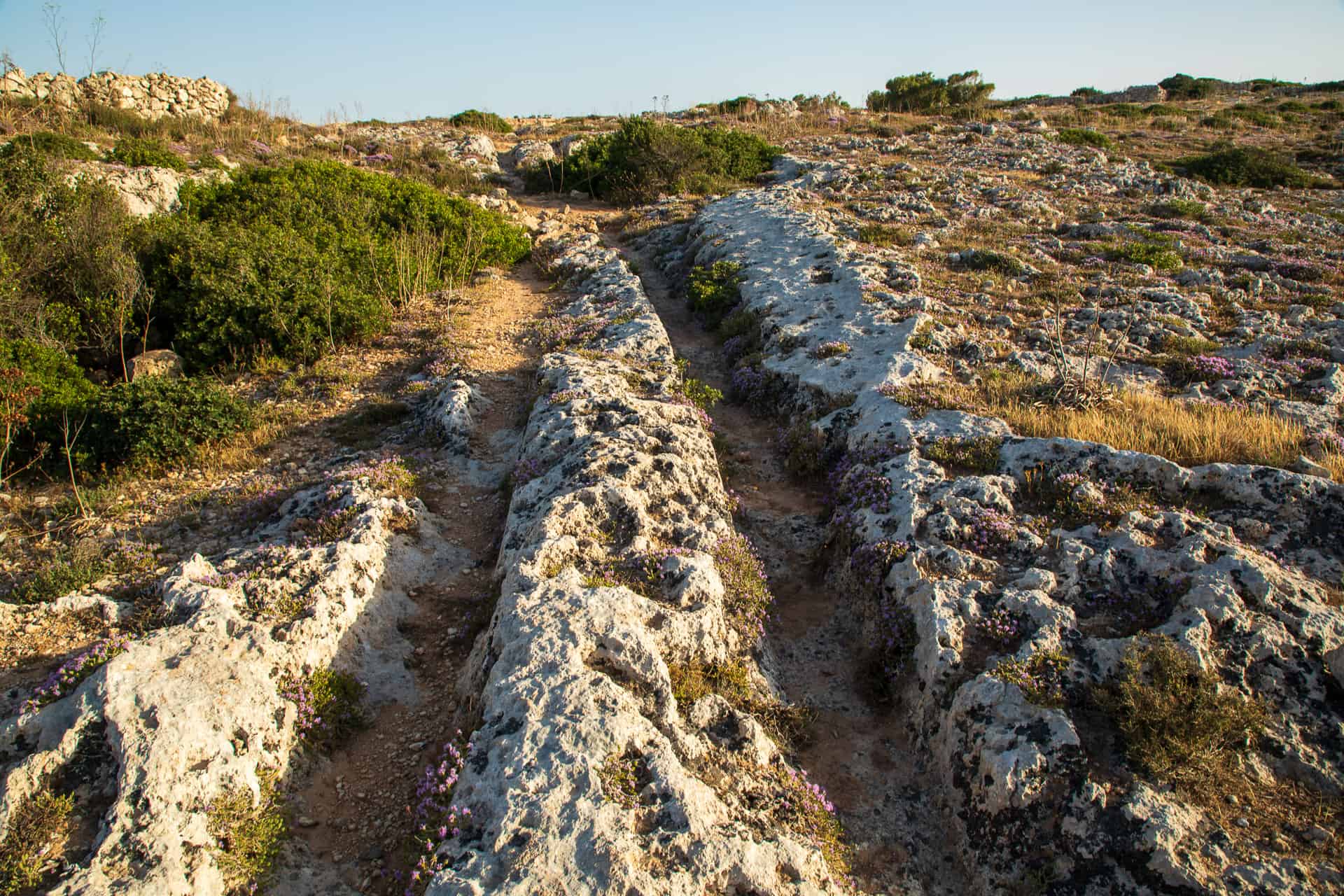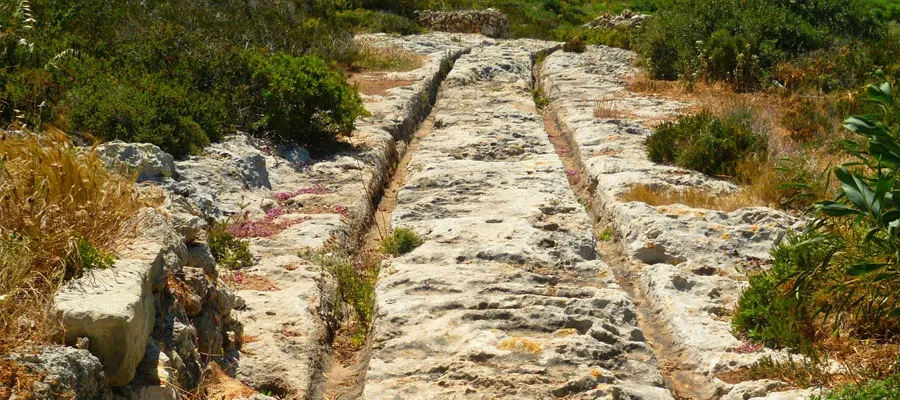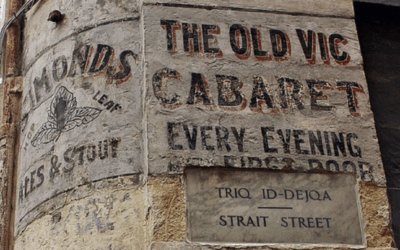What Are Malta’s Cart Ruts?
Across the islands of Malta and Gozo, visitors can find a network of deep grooves cut into the limestone bedrock, known as Cart Ruts. These parallel tracks, sometimes crossing, merging, or leading straight into the sea, form one of the great archaeological mysteries of Malta.
Visible in over 30 locations, including Misraħ Għar il-Kbir (nicknamed Clapham Junction), Birżebbuġa, Dingli Cliffs, Ħaġar Qim, and Mnajdra, the Cart Ruts continue to intrigue researchers and travelers alike. Their purpose and exact age remain uncertain, but their scale and precision suggest they played a major role in Malta’s prehistoric landscape.
Morphological Features of the Maltese Cart Ruts
The Cart Ruts typically consist of pairs of parallel grooves carved into limestone, each with a V-shaped profile and rounded bottom.
Their dimensions are remarkably consistent:
- Width at the top: around 7 cm
- Depth: up to 60 cm
- Distance between inner edges: 100–130 cm
This spacing has even been compared to that of modern railways, though such comparisons should be made cautiously. The grooves are not always perfectly parallel; many intersect or overlap, forming complex networks that sometimes end abruptly at cliff edges or in the sea.
These features suggest a standardized system, possibly reflecting a shared purpose or method of creation. However, natural erosion and geological processes have blurred many of their original characteristics, making
interpretation difficult.
Theories About the Origin of the Cart Ruts
The origin and function of the Cart Ruts have been debated for more than a century, and several main hypotheses exist:
- Neolithic Transport Routes: the most widely accepted theory suggests that the ruts date back to the Neolithic period, around the same time as Malta’s megalithic temples (circa 3800–2500 BCE). They may have been used to transport heavy stones or goods, perhaps using wooden sledges.
- Roman or Later Origin: some scholars have suggested a Roman or post-Roman origin, though this is contested since many tracks lead to cliffs or the sea, which seems illogical for practical roadways.
- Symbolic or Ritual Use: others believe the ruts had a ceremonial or religious function, possibly aligned with ancient pathways or processions.
- Speculative Theories: more imaginative ideas propose pre-Diluvian or extraterrestrial explanations, though these lack archaeological evidence.
While the exact purpose remains unknown, the sophisticated network pattern implies an organized prehistoric society with advanced knowledge of terrain and coordination.
Where to Find the Cart Ruts in Malta
The Cart Ruts of Malta can be seen in more than thirty sites across the islands. The most famous and accessible locations include:
- Misraħ Għar il-Kbir (Clapham Junction) – The largest and most impressive concentration, where ruts crisscross densely over the rock surface.
- Birżebbuġa – Near the coast, offering scenic views and ruts that appear to lead toward the sea.
- Dingli Cliffs – Spectacular views and a dramatic setting where some tracks end abruptly at cliff edges.
- Ħaġar Qim and Mnajdra – Near the Neolithic temples, suggesting a
possible link between the two. - Buskett Gardens – Surrounded by greenery, offering a peaceful walk through history.
- Naxxar and Attard – Smaller yet well-preserved examples scattered inland.
These sites are ideal for visitors interested in Malta’s prehistoric landscape, combining archaeology, geology, and mystery.

Cart ruts at Misrah Ghar il-Kbir.
Photo: lifepart2andbeyond
Preservation and Cultural Significance
The Cart Ruts are among the most unique remnants of Malta’s Neolithic heritage. They offer rare insight into the daily life, transport, and technology of the island’s earliest inhabitants.
To protect this heritage, the Maltese government and local archaeologists have introduced conservation measures such as:
- Legal protection of major sites
- Designated tourist trails and viewing platforms
- Educational signage and guided visits
These efforts aim to preserve the ruts against erosion, weathering, and human impact, ensuring that future generations can continue to study and admire them.
Today, the Cart Ruts of Malta attract tourists, historians, and scientists from around the world. They stand as a symbol of Malta’s ancient civilization: mysterious, enduring, and profoundly captivating.

The Cart Ruts of Malta remain one of the Mediterranean’s greatest archaeological enigmas. Likely dating back to the Neolithic era, these parallel tracks carved in stone continue to inspire debate and wonder. Whether you visit Clapham Junction or explore smaller sites near the temples, you’ll discover traces of an ancient world that once thrived on the islands, a civilization whose marks are still visible today, etched permanently into the Maltese rock.




